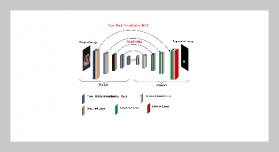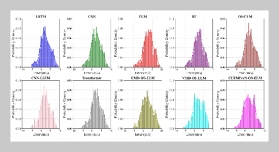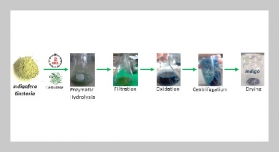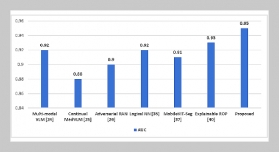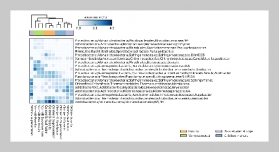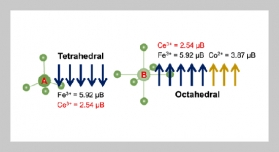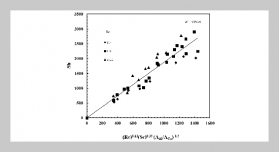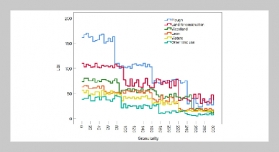- [1] E. Miccadei, C. Carabella, and G. Paglia. Landslide Hazard and Environment Risk Assessment. 2022.
- [2] M.Krkaˇ c, D. Špoljari´ c, S. Bernat, and S. M. Arbanas, (2017) “Method for prediction of landslide movements based on random forests" Landslides 14: 947–960.
- [3] W. Chen, H. Shahabi, S. Zhang, K. Khosravi, A. Shirzadi, K. Chapi, B. T. Pham, T. Zhang, L. Zhang, H. Chai, et al., (2018) “Landslide susceptibility modeling based on gis and novel bagging-based kernel logistic regression" Applied Sciences 8(12): 2540.
- [4] X. Zhu, Q. Xu, M.Tang, H. Li, and F. Liu, (2018) “A hybrid machine learning and computing model for fore casting displacement of multifactor-induced landslides" Neural Computing and Applications 30: 3825–3835.
- [5] P. Zuan and Y. Huang, (2018) “Prediction of sliding slope displacement based on intelligent algorithm" Wireless Personal Communications 102: 3141–3157.
- [6] J. Xu, Y. Jiang, and C. Yang, (2022) “Landslide displace ment prediction during the sliding process using XGBoost, SVRand RNNs"Applied Sciences 12(12): 6056.
- [7] H.Wang, G.Long, P. Shao, Y. Lv, F. Gan, and J. Liao, (2023) “A DES-BDNN based probabilistic forecasting approach for step-like landslide displacement" Journal of Cleaner Production 394: 136281.
- [8] W.Gong, S. Tian, L. Wang, Z. Li, H. Tang, T. Li, and L. Zhang, (2022) “Interval prediction of landslide dis placement with dual-output least squares support vector machine and particle swarm optimization algorithms" Acta Geotechnica 17(9): 4013–4031.
- [9] Y. Xing, J. Yue, C. Chen, D. Cai, J. Hu, and Y. Xi ang, (2021) “Prediction interval estimation of landslide displacement using adaptive chicken swarm optimization tuned support vector machines" Applied intelligence: 1–18.
- [10] Q. Ge, H. Sun, Z. Liu, B. Yang, S. Lacasse, and F. Nadim, (2022) “A novel approach for displacement inter val forecasting of landslides with step-like displacement pattern" Georisk: assessment and management of risk for engineered systems and geohazards 16(3): 489–503.
- [11] J. Ma, H. Tang, X. Liu, T. Wen, J. Zhang, Q. Tan, and Z. Fan, (2018) “Probabilistic forecasting of landslide dis placement accounting for epistemic uncertainty: a case study in the Three Gorges Reservoir area, China" Land slides 15: 1145–1153.
- [12] Y. Liu, C. Li, J. Wang, and M. Long, (2024) “Koopa: Learning non-stationary time series dynamics with koop manpredictors" Advances in Neural Information Processing Systems 36:
- [13] A. Das, W. Kong, A. Leach, S. Mathur, R. Sen, and R. Yu, (2023) “Long-term forecasting with tide: Time-series dense encoder" arXiv preprint arXiv:2304.08424:
- [14] H. Wu, T. Hu, Y. Liu, H. Zhou, J. Wang, and M. Long, (2022) “Timesnet: Temporal 2d-variation mod eling for general time series analysis" arXiv preprint arXiv:2210.02186:
- [15] M.Liu,A.Zeng,M.Chen,Z.Xu,Q.Lai,L.Ma,andQ. Xu, (2022) “Scinet: Time series modeling and forecasting with sample convolution and interaction" Advances in Neural Information Processing Systems 35: 5816–5828.
- [16] H.Zhou, S. Zhang, J. Peng, S. Zhang, J. Li, H. Xiong, and W. Zhang. “Informer: Beyond efficient trans former for long sequence time-series forecasting”. In: Proceedings of the AAAI conference on artificial intelligence. 35. 12. 2021, 11106–11115.
- [17] H. Wu, J. Xu, J. Wang, and M. Long, (2021) “Auto former: Decomposition transformers with auto-correlation for long-term series forecasting" Advances in neural information processing systems 34: 22419–22430.
- [18] T. Zhou, Z. Ma, Q. Wen, X. Wang, L. Sun, and R. Jin. “Fedformer: Frequency enhanced decomposed transformer for long-term series forecasting”. In: In ternational conference on machine learning. PMLR. 2022, 27268–27286.
- [19] Y. Nie, N. H. Nguyen, P. Sinthong, and J. Kalagnanam, (2022) “A time series is worth 64 words: Long-term forecasting with transformers" arXiv preprint arXiv:2211.14730:
- [20] Y. Liu, T. Hu, H. Zhang, H. Wu, S. Wang, L. Ma, and M. Long, (2023) “itransformer: Inverted transformers are effective for time series forecasting" arXiv preprint arXiv:2310.06625:
- [21] A. Vaswani, (2017) “Attention is all you need" arXiv preprint arXiv:1706.03762:
- [22] K. Rasul, A. Ashok, A. R. Williams, H. Ghonia, R. Bhagwatkar, A. Khorasani, M. J. D. Bayazi, G. Adamopoulos, R. Riachi, N. Hassen, M. Biloš, S. Garg, A. Schneider, N. Chapados, A. Drouin, V. Zant edeschi, Y. Nevmyvaka, and I. Rish. Lag-Llama: To wards Foundation Models for Probabilistic Time Series Forecasting. 2024. arXiv: 2310.08278 [cs.LG].
- [23] H.Touvron, T. Lavril, G. Izacard, X. Martinet, M.-A. Lachaux, T. Lacroix, B. Rozière, N. Goyal, E. Hambro, F. Azhar, A. Rodriguez, A. Joulin, E. Grave, and G. Lample. LLaMA: Open and Efficient Foundation Language Models. 2023. arXiv: 2302.13971 [cs.CL].
- [24] B. Zhang and R. Sennrich. Root Mean Square Layer Normalization. 2019. arXiv: 1910.07467 [cs.LG].
- [25] J. Su, Y. Lu, S. Pan, A. Murtadha, B. Wen, and Y. Liu. RoFormer: Enhanced Transformer with Rotary Position Embedding. 2023. arXiv: 2104.09864 [cs.CL].
- [26] M.Xia, G. M. Ren, and X. L. Ma, (2013) “Deformation and mechanism of landslide influenced by the effects of reservoir water and rainfall, Three Gorges, China" Natu ral Hazards 68: 467–482.
- [27] C.Lian, Z. Zeng, W. Yao, and H. Tang, (2014) “Ensemble of extreme learning machine for landslide displacement prediction based on time series analysis" Neural Com puting and Applications 24: 99–107.
- [28] F. Ren, X. Wu, K. Zhang, and R. Niu, (2015) “Application of wavelet analysis and a particle swarm-optimized support vector machine to predict the displacement of the Shuping landslide in the Three Gorges, China" Environ mental Earth Sciences 73: 4791–4804.
- [29] C. Lian, Z. Zeng, W. Yao, and H. Tang, (2015) “Mul tiple neural networks switched prediction for landslide displacement" Engineering geology 186: 91–99.
- [30] S. Xu and R. Niu, (2018) “Displacement prediction of Baijiabao landslide based on empirical mode decomposition and long short-term memory neural network in Three Gorges area, China" Computers & Geosciences 111: 87–96.
- [31] C. Lian, C. P. Chen, Z. Zeng, W. Yao, and H. Tang, (2016) “Prediction intervals for landslide displacement based on switched neural networks" IEEE Transactions on Reliability 65(3): 1483–1495.



